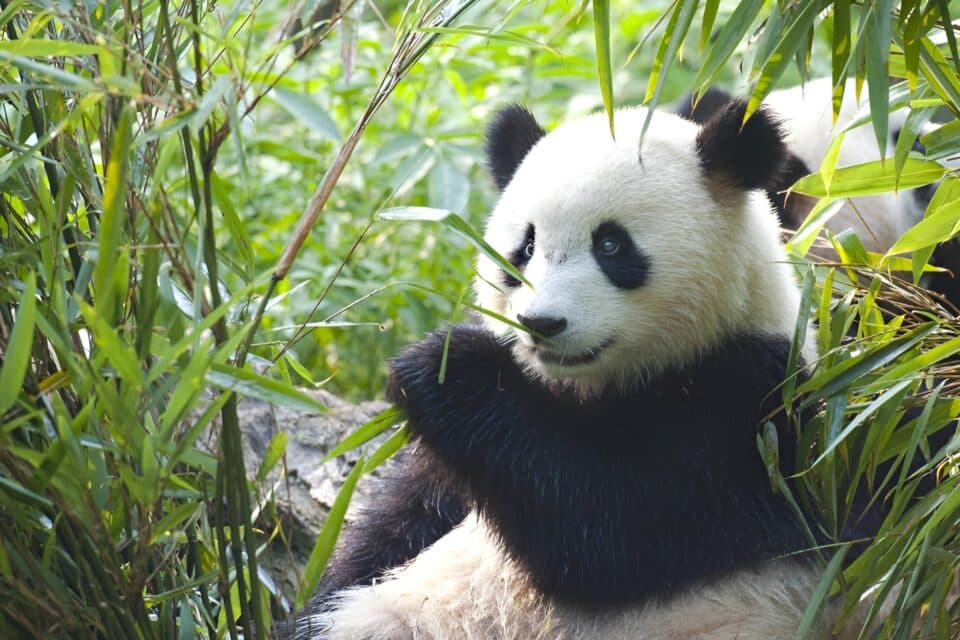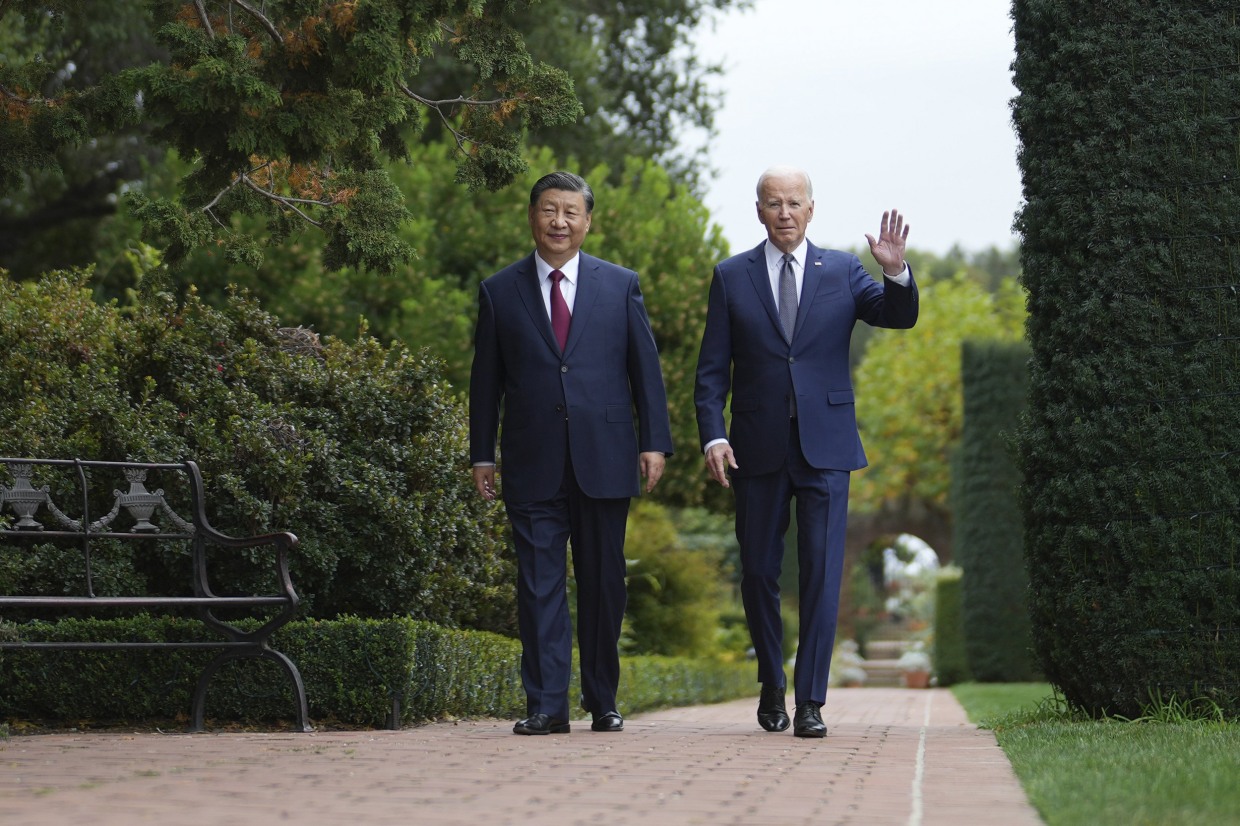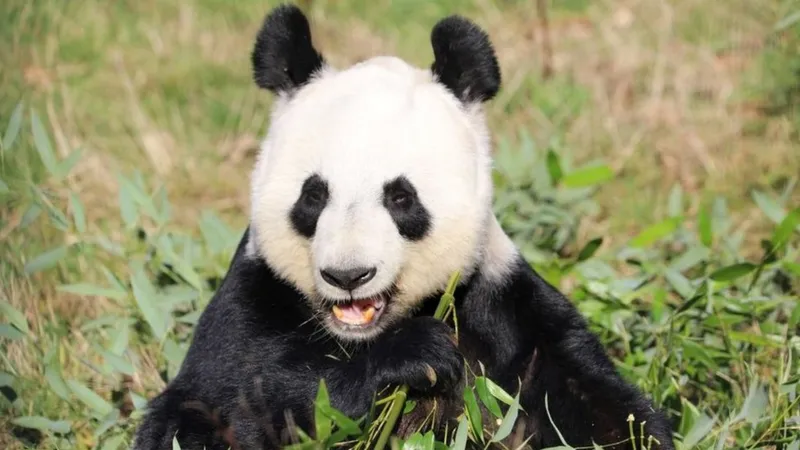
03-16-2024
National Panda Day: Recognizing the beauty and fragility of the giant panda
ByChrissy Sexton
Earth.com staff writer
National Panda Day, celebrated annually on March 16, marks an important occasion to honor and raise awareness about one of the most beloved and iconic species on the planet. Originating from China, pandas are not just a source of national pride but also play a crucial role in the conservation of biodiversity.
There are two subspecies of panda – the Giant, black and white panda, and the much rarer, Qinling panda, a brown subspecies discovered in 1985 in the mountain ranges of southern Shaanxi Province, China.
Conservation status of pandas
In the wild, giant pandas are found exclusively in remote mountainous regions of China. Despite the challenges they face, including habitat loss, farming, fur hunting, and a naturally low birth rate, conservation efforts over the years have led to a positive outcome. By 2019, the status of pandas was upgraded from “endangered” to “vulnerable.”
The significant improvement in the panda’s conservation status by 2020 can be attributed to various efforts, including reproduction programs in zoos, reforestation, and conservation campaigns. However, with less than 2,000 pandas left in the wild, the fight to protect these creatures and their habitat is far from over.
Ecological role of pandas
Pandas are more than just charismatic animals; they are a keystone in the conservation efforts for biodiversity, making their protection vital for ecological health and sustainability.
Ecosystem health
Pandas play a crucial role in the biodiversity of the forests they inhabit. As bamboo specialists, they help maintain the health and growth of bamboo forests by spreading seeds and facilitating growth. Their activities support a variety of other organisms in these ecosystems.
Umbrella species
Pandas are considered an umbrella species. Protecting pandas and their habitat benefits a multitude of other species. Conservation efforts aimed at pandas indirectly protect the broader ecological community and other endangered species sharing their habitat.
A scientific paper published in 2015 by The Society for Conservation Biology revealed that preserving the panda’s natural habitat aids 70% of the country’s forest birds, 70% of mammals, and 31% of amphibians.
Economic benefit of pandas
Pandas have significant economic benefits through ecotourism. Many people travel to reserves and zoos to see these unique animals, bringing income to local communities and funding for conservation projects.
Cultural symbol
The giant panda is a symbol of peace and friendship in China, representing conservation efforts worldwide. Its image is globally recognized and used in wildlife conservation campaigns, highlighting the importance of environmental protection.
Scientific research
Studying pandas helps scientists understand the requirements for species conservation, including habitat preservation, the impact of human activity on wildlife, and the complex interactions within ecosystems. Research on pandas can offer insights applicable to the conservation of other species as well.
Fascinating facts about pandas
Giant pandas are incredibly fascinating creatures with a number of distinctive traits and behaviors. These unique adaptations underscore the global effort required to preserve such an iconic species.
Specialized diet
Despite belonging to the carnivorous bear family, pandas have a diet that is almost entirely bamboo. They eat 26 to 84 pounds of bamboo a day, depending on what part of the bamboo they are eating. This diet requires them to eat for up to 12 hours a day.
Bamboo digestion
Pandas have a carnivore’s digestive system but have adapted to their bamboo diet by developing a strong, muscular esophagus and stomach to digest the tough bamboo. They can only digest about 17% of the bamboo they eat, so they have to eat a lot to get enough nutrients.
Thumb-like appendage
Pandas have an enlarged wrist bone that acts like a thumb, which helps them to hold bamboo while eating. This adaptation is crucial for their bamboo-centric diet.
Color vision in pandas
Unlike many mammals, pandas can see in color. This ability may help them differentiate between the nutritious and fresh green bamboo and the less nutritious yellow bamboo.
Unique births
Panda mothers are known to give birth to one of the smallest mammal newborns relative to the mother’s size. A newborn panda is about 1/900th the size of its mother, blind, and helpless.
Solitary creatures
Pandas are solitary animals, with adults only coming together to mate. They communicate through scent marks, calls, and occasional meetings.
Energy conservation
Due to their low-nutrition diet, pandas have a low metabolism and prefer to conserve energy. They often appear to be resting or moving slowly when not eating.
Longevity
In the wild, pandas can live up to 20 years, but in captivity, they have lived to be as old as 38 years, thanks to advancements in veterinary care and improved living conditions.
Distinctive coloring of pandas
The giant panda’s distinctive black-and-white coloring is one of its most famous features, and it serves as more than just an adorable aspect of their appearance. This unique coloration provides effective camouflage in their natural habitat, aiding their survival in several ways.
Blending with snow and shadows
The white parts of the panda’s fur help it blend in with the snowy backdrop of its mountainous habitat in China, while the black parts provide camouflage in the shadows of the dense bamboo forests where it lives and feeds. This contrast is thought to help them remain inconspicuous to predators and prey.
Communication
The stark contrast in their fur might also play a role in communication. The distinctive markings on their face help pandas recognize each other and may also convey expressions or emotional states, which is crucial for a mostly solitary animal.
Thermal regulation
Some researchers suggest that the black and white fur may also have a role in thermal regulation, with the black parts absorbing heat from the sun and the white parts reflecting it, although this theory is more speculative.
Despite their size and distinct coloring, pandas can blend remarkably well into their surroundings, a testament to the evolutionary adaptations that have allowed them to survive in their specific ecological niche.
Significance of National Panda Day
The creation of National Panda Day, while its origins remain unclear, was likely intended to draw attention to the plight of the pandas and motivate efforts to prevent their extinction.
Since its formation in 1961, the World Wildlife Fund (WWF) has adopted the panda in its logo. This emblem has become a global call to action to preserve endangered species and their natural habitats.
National Panda Day serves as a reminder of the beauty and fragility of wildlife, encouraging ongoing efforts in conservation. Today, we must reaffirm our commitment to protecting these gentle giants and the biodiversity they represent.





 Reply With Quote
Reply With Quote







